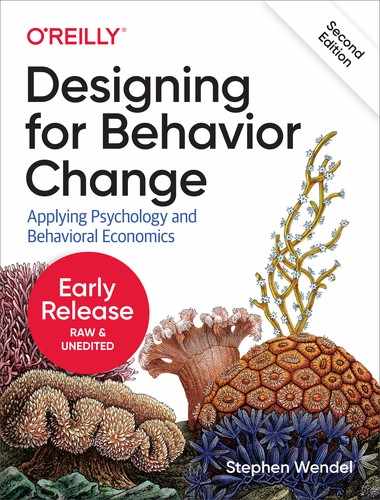Book Description
Designers and managers hope their products become essential for users—similar to the way Instagram and Lyft have become a way of life for many. Such as deep integration into people’s lives isn’t accidental: it’s a process of careful design and iterative learning. This guide shows you how to apply behavioral science to help your users achieve their goals.
In this updated edition, Stephen Wendel, Head of Behavioral Science at Morningstar, takes you step-by-step through the process of incorporating behavioral science into product design and development. Product managers, UX and interaction designers, and data analysts will learn a simple and effective approach for identifying target users and behaviors, building the product, and gauging its effectiveness.
- Learn the three main strategies to help people change behavior
- Identify the behaviors your target audience seeks to change, and their obstacles
- Develop effective designs that are enjoyable to use
- Measure your product’s impact and learn ways to improve it
- Combine behavioral science with data science to pinpoint problems and test potentials solutions in practice
